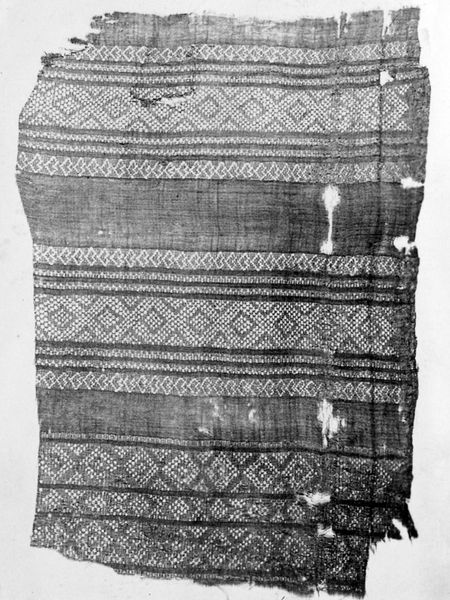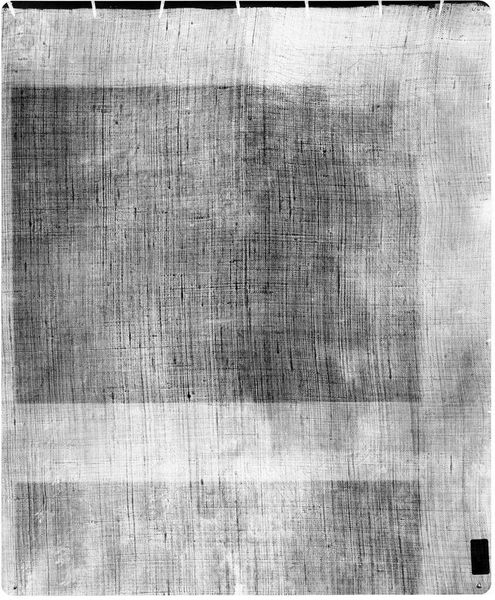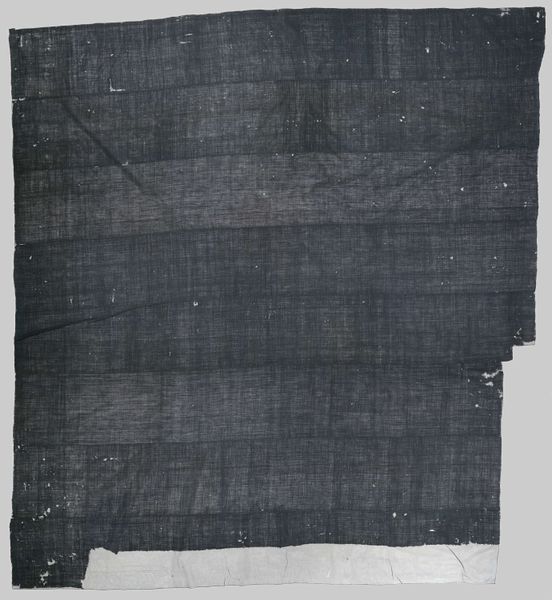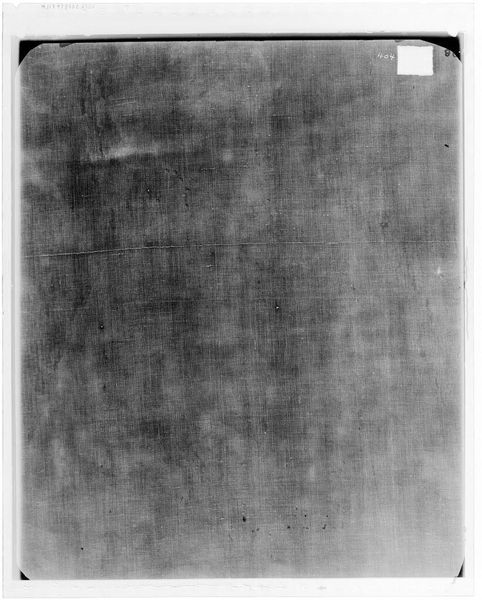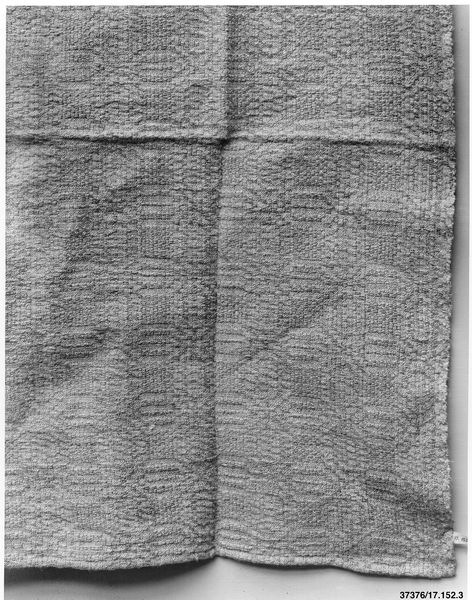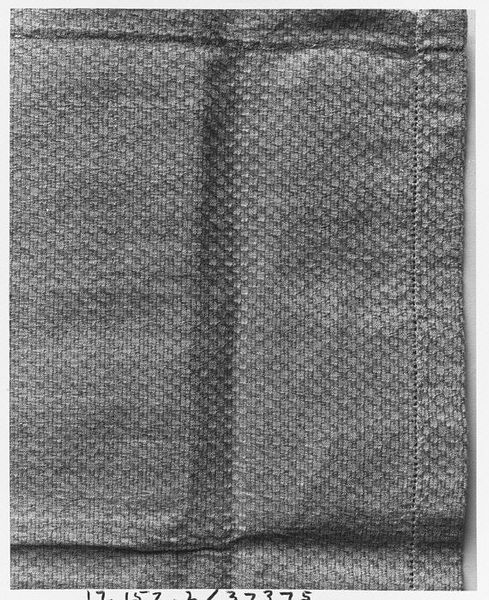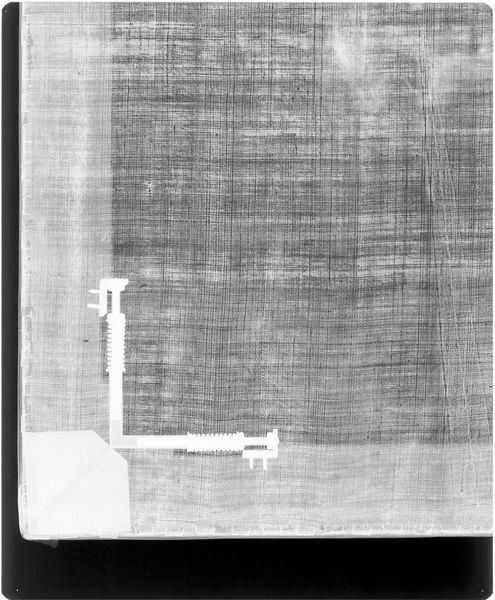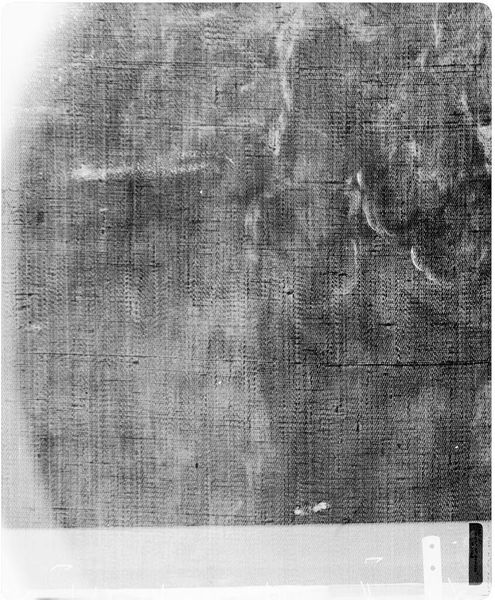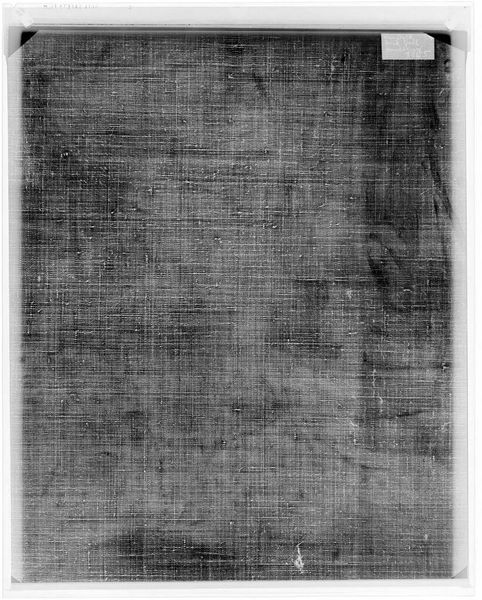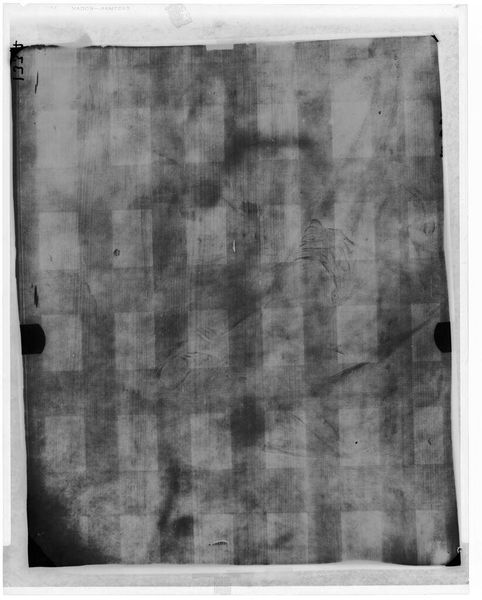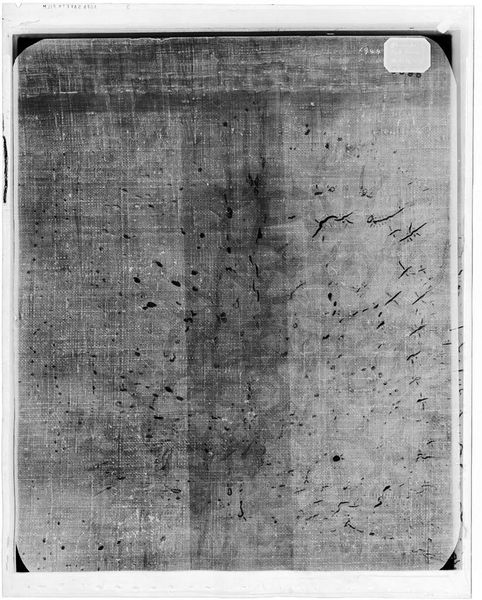
fibre-art, weaving, textile
#
fibre-art
#
weaving
#
textile
#
geometric
#
texture
#
indigenous-americas
Dimensions: a: 33 × 26.7 cm (13 × 10 1/2 in.) b: 63.5 × 26.7 cm (25 × 10 1/2 in.)
Copyright: Public Domain
Curator: This work is entitled "Fragments." It's a textile, specifically weaving, dating possibly between 1000 and 1476 and forms part of the collection here at the Art Institute of Chicago. It is thought to be associated with the Ica culture of Latin America. Editor: The monochrome aesthetic, especially given its potential age, is striking. The textures draw the eye down the composition, but there is a quiet austerity about it. I sense absence, incompleteness. Curator: The fragmented state undeniably evokes loss. Its creation in pre-Columbian Latin America is critical, situating it within histories of colonial violence, cultural erasure, and the suppression of indigenous art forms. The survival of even this small portion suggests resilience. Editor: The visible labor of creation is palpable even through the photo. I am very curious about its intended function. Was it ceremonial? Everyday? And by whom was it made? Curator: Textiles were often politically charged objects, used as displays of status, indicators of social structures, and embodied with symbolic meaning relating to cosmological or agricultural beliefs. Weavings were also acts of resistance. Think of arpilleras from Chile, documenting human rights abuses through textile art, connecting to indigenous weaving practices to demonstrate an ancestral connection. Editor: The weaving seems to represent both meticulous craftsmanship and some element of the chaos in its composition and ragged edges. Curator: Exactly! The interplay between design and disruption, echoes current post-colonial and feminist theory. Editor: For me, its monochromatic presence, given my earlier interpretation of its being austere, now seems incredibly charged when you factor in both gender and the complex colonial legacies inherent in its origin and survival. It also reminds us of the many lost artworks of the period, and the impact of its loss and marginalization to today's communities. Curator: Thinking through how such fragments can hold so much historical weight, artistic intention, and acts as a form of quiet but powerful cultural commentary is key. It moves the way we engage with and understand artistic expression by cultures long gone. Editor: I leave appreciating its textures, patterns and histories so very deeply and more thoughtfully, appreciating even what is left unspoken here in its incomplete beauty.
Comments
No comments
Be the first to comment and join the conversation on the ultimate creative platform.
